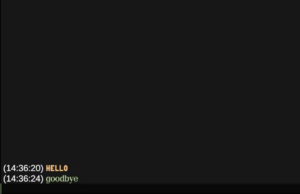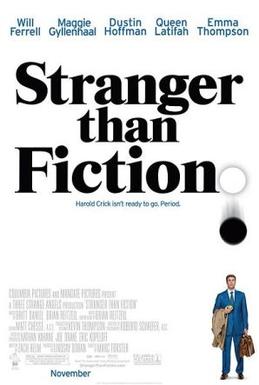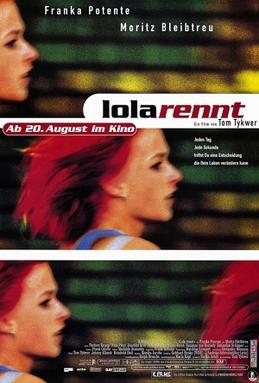User:Zuhui/Writers' Protocol: Difference between revisions
| Line 33: | Line 33: | ||
</blockquote> | </blockquote> | ||
===a narrative about storytelling=== | ===a narrative about storytelling=== | ||
* '''Author's control vs. character's agency:''' Harold discovers that his fate is entirely in the hands of Karen, who intends to kill him off in her book. This creates a direct confrontation between the character's desire for agency (Harold wanting to live) and the author's authority over the story. | |||
* '''The fourth wall..?:''' The film constantly comments on the process of storytelling. Karen discusses narrative structure, foreshadowing, and character development while Harold just lives out these elements in his "real" life. | |||
* '''Storytelling cliche as plot points:''' The film plays with classic literary devices like foreshadowing, existential themes, and the 'hero's journey' to reflect on the role of the author in crafting a story, meaning. | |||
* '''Life as a story:''' The narrative also indicates how much control we have over our lives and whether life itself has inherent meaning or is shaped by external "authors" (e.g., fate, society, or actual storytellers). | |||
===meta commentary in film form=== | ===meta commentary in film form=== | ||
In the end, Harold's confrontation with Karen | In the end, Harold's confrontation with Karen completes the meta-narrative full circle. Karen decides to rewrite her ending to spare Harold's life. This decision implies that stories can evolve, just as characters can. | ||
The meta-aspect of Stranger Than Fiction makes the audience constantly aware that they are watching a story about a story. It turns the process of storytelling into a spectacle, where both the author and character (and by extension, the audience) reflect on the meaning of narrative itself. | The meta-aspect of Stranger Than Fiction makes the audience constantly aware that they are watching a story about a story. It turns the process of storytelling into a spectacle, where both the author and character (and by extension, the audience) reflect on the meaning of narrative itself. | ||
Revision as of 22:12, 15 November 2024
SI25 Sounds of Making, ‘Lost in Narration’
Language itself is elastic, bouncing from medium to medium, with each phase refracting meaning. This performance is to experience the nuances lost and gained, the tension between translation and miscommunication within an endlessly looping narrative that is never quite stable.
In this live performance, a writer in the room observes and documents the ongoing events in real time, describing the atmosphere, visitors, and interactions as they occur. This live script is projected onto a screen, letting everyone to view the room through the writer’s perspective. As viewers read these words, they become characters in a narrative that may or may not fully reflect reality.
At the same time, a performer with a microphone reads the live script aloud, narrating the text into spoken form. This narration is then immediately processed through an abstract soundscape, adding musical layers that alter the tone, rhythm, and mood of the narrative.
Finally, the narrative returns to text form, appearing as printed fragments on a table. Each step in this loop —from text to speech, from speech to music, and back to text—brings subtle distortions, as each medium imposes its own nuances and limits. With each transition, the original meaning drifts, sometimes losing clarity or gaining new interpretations. Weaving misinterpretations and distortions into the narrative is part of experiencing the language.
Two writers and a parallel narrative
parallel or intersecting?
In this live-scripting performance, Lexie and I document our observations of the room as writers, creating two parallel narratives—a structure where two or more stories unfold independently while coexisting side by side.
Although we are observing the same space, we craft our own stories from different perspectives and viewpoints. These independent records could give visitors a multi-layered interpretation(and misinterpretation**) of the space when compared or contrasted.
In a broader sense, the records of the two writers may influence or intersect with each other, potentially forming a unified narrative. Since the observation occur in the same space, the two narratives will naturally interact.
Writers' protocol
Framework
1. Different font colors: Use different font colors for writers to distinguish between the two perspectives in the live script.
2. Time stamps: Record every entry with a timestamp. Timestamp can help each observation stand independently in chronological order (and to prevent the narratives from resembling a conversation?) and emphasizing that this is happening in real time and space.
3. Limit the amount of sentence: Limit each writer to one sentence per entry, to create a short, segmented scripting style.
4. Writers taking turns: When one writer completes a sentence, press 'Tab' to hand over to the other writer (or use a similar method to alternate turns). 4-1. What happens if one writer takes a break? -The remaining writer continues writing.
Performative
What makes a narrative?
Reference
Stranger than fiction (2006)
The story revolves around Harold Crick, an IRS auditor, who begins hearing a disembodied voice narrating his life. The voice belongs to Karen Eiffel, an author writing a novel in which Harold is unknowingly the protagonist. Harold's realization that he is part of a story sets the meta-narrative in motion.
a narrative about storytelling
- Author's control vs. character's agency: Harold discovers that his fate is entirely in the hands of Karen, who intends to kill him off in her book. This creates a direct confrontation between the character's desire for agency (Harold wanting to live) and the author's authority over the story.
- The fourth wall..?: The film constantly comments on the process of storytelling. Karen discusses narrative structure, foreshadowing, and character development while Harold just lives out these elements in his "real" life.
- Storytelling cliche as plot points: The film plays with classic literary devices like foreshadowing, existential themes, and the 'hero's journey' to reflect on the role of the author in crafting a story, meaning.
- Life as a story: The narrative also indicates how much control we have over our lives and whether life itself has inherent meaning or is shaped by external "authors" (e.g., fate, society, or actual storytellers).
meta commentary in film form
In the end, Harold's confrontation with Karen completes the meta-narrative full circle. Karen decides to rewrite her ending to spare Harold's life. This decision implies that stories can evolve, just as characters can.
The meta-aspect of Stranger Than Fiction makes the audience constantly aware that they are watching a story about a story. It turns the process of storytelling into a spectacle, where both the author and character (and by extension, the audience) reflect on the meaning of narrative itself.



